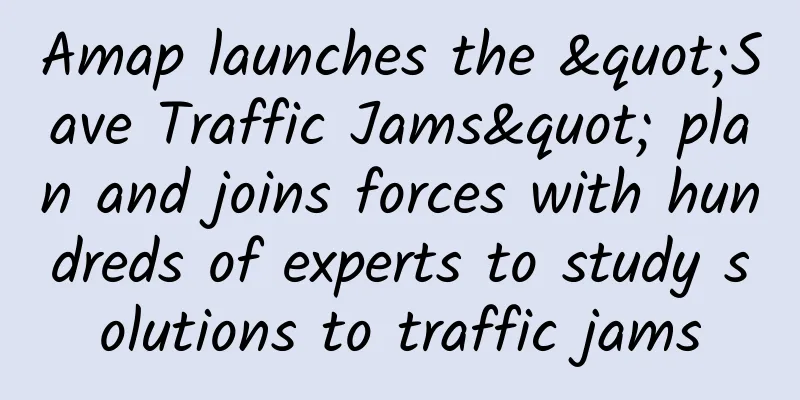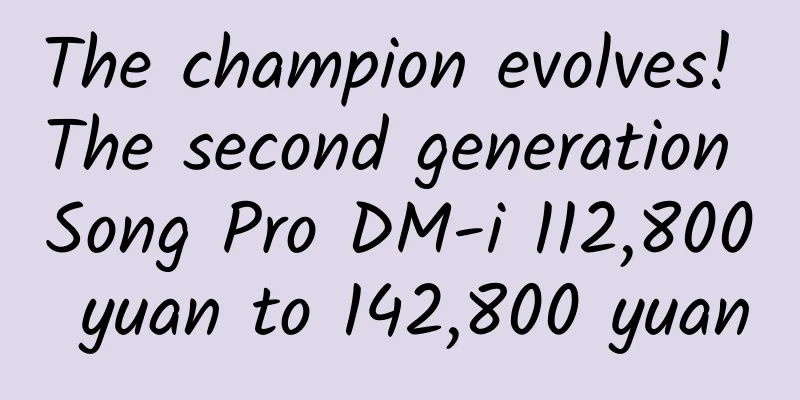Amap launches the "Save Traffic Jams" plan and joins forces with hundreds of experts to study solutions to traffic jams

|
On July 26, 2018, at the 2018 Future Transportation Summit held today, AutoNavi Maps announced the top ten traffic jams in China as voted by netizens, among which Dashanzi-Wangjing Street intersection, North Bank of the Pearl River-Yanjiang West Road, Wuyingshan-Xiaoqinghe South Road received the most votes and became the "most congested points" in Beijing, Guangzhou, and Jinan respectively. AutoNavi Maps also stated that it will officially launch the "Save Traffic Jams" plan, soliciting "brain-opening" solutions from the public, and jointly researching traffic jam solutions with hundreds of traffic experts, and the results will be announced in December. Amap reveals China's top 10 traffic jams The "2018 Q2 China Major Cities Traffic Analysis Report" recently released by Amap shows that China's top ten most congested cities are Beijing, Guangzhou, Chongqing, Harbin, Yinchuan, Shanghai, Jinan, Guiyang, Zhuhai and Changchun. While announcing the top ten congested cities, Amap published the top three congested sections in each city based on the frequent congestion data of the roads in each city. The data shows that among the 30 congestion points in the top ten congested cities, Beijing's Beijing-Xinjiang Expressway, Shanghai's Gangcheng Road, Guangzhou's Yanjiang West Road, Jinan's Xiaoqinghe South Road, Chongqing's Xiaoshizi Intersection, Guiyang's Jinqing Avenue, Harbin's Customs Street, Zhuhai Avenue Auxiliary Road, Yinchuan's Tongda South Street, Changchun's Mengjiagong Railway Bridge, etc. are all frequently congested sections in Q2. In response to the frequent congestion points in these most congested cities, Amap launched an Internet user voting activity from July 19th to 24th, asking netizens to vote and select the "Top Ten Congestion Points in China". According to the latest voting results, Beijing's Dashanzi-Wangjing Street intersection won the first place and became the "most voted" traffic jam among the 30 traffic jams in the top ten congested cities. In addition, Guangzhou's North Bank of the Pearl River-Yanjiang West Road, Harbin's Nangang District-Haiguan Street, Chongqing's Hongen Temple-Hongen Road, Yinchuan's New Town-Tongda North Street, Shanghai's Gaoqiao-Gangcheng Road, Jinan's Wuyingshan-Xiaoqinghe South Road, Guiyang's Guanshanhu District-Jinqing Avenue, Zhuhai's Xiangzhou District-Zhuhai Avenue Auxiliary Road, Changchun's Chaoyang District-Mengjiagong Railway Bridge were selected as the traffic jams in their respective cities by netizens. Amap joins forces with hundreds of experts to "save traffic jams" Traffic jams have become a national concern, and both ordinary citizens and city managers have experienced them firsthand. Liu Zhenfei, partner of Alibaba and president of AutoNavi Group, officially announced at the 2018 Future Transportation Summit that he would launch a plan to "save traffic jams". In order to "save" China's top ten traffic jams, the traffic jam solution will be jointly completed by the Future Transportation and Urban Computing Joint Laboratory established by AutoNavi Maps and a number of top domestic experts and talents. On December 7 last year, AutoNavi Maps teamed up with the China Highway Society to jointly establish the Joint Laboratory for Future Transportation and Urban Computing (hereinafter referred to as the "Laboratory"), and launched the "Ten Hundred Thousand Plan" - the laboratory will invest for ten years, cooperate with hundreds of universities and research institutions, and train thousands of expert talents for future transportation. The laboratory has launched multiple research directions, including "sockets" that can provide unlimited data energy, traffic "doctors" who can diagnose urban congestion, talking road safety warning "elves", "smart" highways that are not troubled by speed limits, and environmental "prophet" that can predict PM2.5 on road sections. The first batch of eight major research teams, including Professor Li Meng's team at Tsinghua University, Professor Yang Xiaoguang's team at Tongji University, Professor Yu Zhi's team at Sun Yat-sen University, Professor Wang Dianhai's team at Zhejiang University, and Professor Wang Yunpeng's team at Beijing University of Aeronautics and Astronautics, have settled in, and have carried out joint research with AutoNavi in the fields of intelligent driving dispatch, urban "CT", urban traffic brain, traffic demand management, and smart public transportation. In addition, in order to cultivate innovative talents for future transportation, the laboratory has also made efforts in interdisciplinary setting, talent training, and international cooperation, and established a talent community for the future transportation field. Since the establishment of the laboratory, Amap has cooperated with various scientific research teams and has achieved "breakthrough" results in the field of mass travel. Amap cooperated with the research team of Tsinghua University to optimize the timing of traffic lights, which can reduce the average delay of motor vehicles passing through intersections in Beijing by 6% and the parking ratio by 3%. In addition, Amap also cooperated with the research team of Tongji University to predict the traffic status of Shanghai based on road condition data, which improved the prediction accuracy of the neural network model of Shanghai elevated roads by 10%. Future transportation will develop from single-unit intelligence to global intelligence While encouraging everyone to think creatively, AutoNavi also has many ideas about future transportation. Liu Zhenfei said: In the future, our travel experience will change from traveling on the road to living on the road. For example, after get off work in the evening, you call a "Chongqing Hotpot" to pick you up, and sitting in this self-driving car, you can "eat hotpot and sing songs" to start a wonderful weekend life. In addition, Liu Zhenfei also said that the future transportation ecology will develop from single-unit intelligence to global intelligence, so it requires a city brain that can coordinate the overall situation and ensure the best experience, efficiency and safety. He used five scenarios to demonstrate the global dispatching capabilities of the future city brain for traffic. For example, in the future, people with a commuting distance of more than 100 kilometers can go out by flying cars. The city brain is equivalent to intelligent air traffic control. With the dispatch of the brain, the departure frequency of flying cars will be much higher than that of current airplanes, and there will be no delays. For example, in the future, people with a commuting distance of 50-100 kilometers will be accustomed to taking the super high-speed rail to work. At this time, the brain dispatch can formulate accurate capacity arrangements and departure schedules for the super high-speed rail. There will be no ticket grabbing during peak hours, and no empty capacity during non-peak hours. For example, in the future, people with a commuting distance of 20-50 kilometers will be accustomed to taking unmanned smart buses. The brain can dispatch smart buses to take you to your destination without delay. For example, in the future, people with a commuting distance of 5-20 kilometers will be accustomed to taking driverless cars. The brain can dispatch driverless cars to carry passengers on the best route and at the best time, without congestion and empty running. For example, in the future, people whose commuting distance is less than 5 kilometers will still be accustomed to shared bicycles. The brain will record the transportation patterns of bicycles and allow bicycles to be deployed to match the needs of surrounding users. Liu Zhenfei said that in the face of future traffic challenges, the Joint Laboratory of Future Traffic and Urban Computing led by AutoNavi Maps will serve as a scientific research infrastructure in the field of transportation. It will provide solutions to current congestion problems and find new variables for the future transportation industry. As a winner of Toutiao's Qingyun Plan and Baijiahao's Bai+ Plan, the 2019 Baidu Digital Author of the Year, the Baijiahao's Most Popular Author in the Technology Field, the 2019 Sogou Technology and Culture Author, and the 2021 Baijiahao Quarterly Influential Creator, he has won many awards, including the 2013 Sohu Best Industry Media Person, the 2015 China New Media Entrepreneurship Competition Beijing Third Place, the 2015 Guangmang Experience Award, the 2015 China New Media Entrepreneurship Competition Finals Third Place, and the 2018 Baidu Dynamic Annual Powerful Celebrity. |
<<: Tesla achieves Model 3 mass production target, but bankruptcy concerns remain
>>: Yidao changes ownership, LeTV's credibility crisis deepens
Recommend
Want to succeed in brand marketing? It’s inseparable from these 4 marketing ideas!
What is the elusive logic behind marketing promot...
8 key words for smart home in 2015
Keywords: low power consumption You may be famili...
Yu Chengdong: Huawei has developed its own operating system, just in case
Huawei’s consumer business CEO Richard Yu said th...
Super hardcore! The great power weapon has a new one
Recently, good news came from the space environme...
The central bank officially announced the digital currency, WeChat Pay was caught off guard, and paper money will soon be replaced
The most primitive trading method of human beings...
How to improve product conversion rate? A few tips!
Whether it is online e-commerce or offline stores...
Crystal Energy Healing Book Baidu Cloud Download
Crystal Energy Healing Manual Recommended by all ...
How to write a good article title? Learn these 3 points!
As an operator , we are often told the importance...
What are the offline application scenarios of mini programs? What is Mini Program for offline merchants?
What are the offline application scenarios of min...
How did these awesome Internet companies like Didi Dache, Momo, and Meituan promote themselves in the early stages?
How did Didi, Momo, and Meituan promote themselve...
Shen Mengchen's first car for taking care of her baby, AION S MAX is available on the market starting at 149,900 yuan
In the past, when a man became a father, he would...
I thought it was a minor gastrointestinal problem, but it turned out to be cancer! Pay attention to these people! Timely examination can really save lives
Stomach pain, bloating, acid reflux, blood in sto...
The update rate of iOS 17 is sluggish, and more and more users don’t want to upgrade!
iOS 17 has been released for more than half a mon...
New regulations on supplementary social security payments for rural veterans in 2022: Can they be supplemented? How to make up for it?
Being a soldier is a glorious profession and they...
Apple's hardcore fans complain: software quality is declining
[[126181]] Marco Arment, who enjoys a high reputa...









